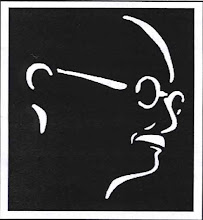NSUI JNU SALUTES AND CONGRATULATES KERALA STUDENTS UNION ON THE SUCCESSFUL COMPLETION OF ITS 52ND ANNIVERSARY. KSU ENTERED THE CENTER STAGE OF STUDENT POLITICS IN KERALA WITH THE FAMOUS “ORANA SAMARAM”, A STRIKE FOR TRAVEL CONCESSIONS FOR STUDENTS IN BUSES AND BOATS OF THE STATE. THE RULING COMMUNIST GOVERNMENT OF THE STATE LEAD BY EMS NAMBOODIRIPAD DEALT WITH THE AGITATION WITH AN IRON FIST INCLUDING WIDESPREAD POLICE ATTACKS ON STUDENTS, LATHICHARGES AND ARRESTS. BUT THE AGITATION WAS A HUGE SUCCESS, AND THE GOVERNMENT HAD TO RELENT TO THE DEMANDS OF STUDENTS.
FROM THEN ONWARDS, THE GROWTH OF KSU WAS TREMENDOUS. KSU BECAME A “FASHION” AMONG THE STUDENT COMMUNITY AND WITH INCESSANT STRUGGLES, THE ORGANIZATION COULD ACHIEVE MANY A MILESTONES OF ACHIEVEMENTS. UNIFICATION OF FEES IN GOVERNMENT AND PRIVATE SCHOOLS AND COLLEGES, CONSTITUTION OF COLLEGE UNIONS AND UNIVERSITY UNIONS THROUGH REGULAR ELECTIONS, UNIVERSITY ARTS FESTIVALS, REPRESENTATION FOR STUDENTS IN THE SENATE, SYNDICATE AND ACADEMIC COUNCILS OF UNIVERSITIES, ERADICATION OF DETENTION SYSTEM, FREE EDUCATION UP TO THE PLUS TWO LEVEL ETC. ARE ONLY A FEW EXAMPLES AMONG THE VAST VARIETY OF ACHIEVEMENTS TO ITS CREDIT. THOUSANDS OF STUDENTS HAD TO SHED THEIR SWEAT AND BLOOD ON THE STREETS TO ACHIEVE THESE, AND THE GREATEST OF THEM HAD TO LAY THEIR LIVES ITSELF, LIKE SUDHAKAR AKKITHAI, SANTHARAM SHENOY, THEVARA MURALI, FRANCIS KARIPPAYI AND K.P. SAJITHLAL.
KSU HAS ALSO GIFTED MANY NATIONAL LEVEL LEADERS OF IMPECCABLE TALENT LIKE AK ANTONY, RAMESH CHENNITHALA, VAYALAR RAVI, KODIKKUNNIL SURESH, HIBI EDEN. AND DYNAMIC LEADERS LIKE OOMMEN CHANDY, K SUDHAKARAN, PT THOMAS, VISHNUNATH, KC VENUGOPAL, ETC.
THOUGH KSU REGULARLY INTERVENED EFFECTIVELY IN THE ACADEMIC FIELD, ITS EFFECT WAS NOT RESTRICTED TO THAT ALONE. IT IS PERHAPS THE FIRST STUDENT MOVEMENT IN INDIA, WHICH COULD EVEN OVERTHROW A GOVERNMENT. THE COMMUNIST OPPRESSIVE REGIME OF EMS, WHICH HAD PROVED TO BE A THREAT TO CONSTITUTIONAL DEMOCRACY ITSELF, WAS THROWN OUT OF OFFICE THROUGH THE AGITATIONS AND RELENTLESS EFFORTS OF KSU IN 1960. IN THE 1970’S, KSU PLAYED ITS DECISIVE ROLE IN RETAINING THE FAITH OF STUDENT COMMUNITY IN THE CONSTITUTIONAL MACHINERY AND NON-VIOLENT MEANS OF SOCIAL CHANGE, IN THE DAYS WHEN NAXALISM AND ARMED ADVENTURES SPREAD AS A WAVE IN COLLEGE CAMPUSES. THE ORGANIZATION BECAME A WATCHDOG OF IDEALISM IN POLITICS AND IT COULD BRING AN END TO THE ‘AAYARAM GAYARAM’ SYNDROME (FREQUENT DEFECTIONS OF POLITICIANS FROM ONE PARTY TO ANOTHER) OF KERALA POLITICS OF THE 1950S. MANY OF ITS FOUNDER LEADERS LIKE A.K. ANTONY, VAYALAR RAVI, OOMMEN CHANDY, A.C.JOSE AND V.M.SUDHEERAN ARE STILL THE DARLINGS OF MILLIONS OF PEOPLE. IT INJECTED FRESH BLOOD INTO THE CONGRESS PARTY AND A WHOLE GENERATION OF NEW LEADERS ENTERED INTO THE POLITICAL ARENA, A LOT OF THEM M.P.S, M.L.A.S AND EVEN TWO CHIEF MINISTERS.
KSU WAS ALWAYS A ROLE MODEL FOR OTHER DEMOCRATIC STUDENT ORGANIZATIONS OF THE COUNTRY. EVEN THE NSUI WAS FORMED AT THE NATIONAL LEVEL TAKING INSPIRATION FROM KSU IN KERALA AND THE ‘CHHATRA PARISHAD’ IN WEST BENGAL.
KSU ALWAYS STOOD FOR THE LEGITIMATE RIGHTS OF THE STUDENT COMMUNITY IRRESPECTIVE OF WHO RULES, AND IT CONTINUES THIS LEGACY EVEN TODAY. IT PUT UP A SERIES OF AGITATIONS AGAINST THE CORRUPTION IN PLUS TWO SCHOOLS ALLOTMENT POLICY OF THE PREVIOUS LDF GOVERNMENT AND IS NOW GOING AHEAD WITH AGITATIONS AGAINST THE IRREGULARITIES IN THE SELF-FINANCING INSTITUTIONS POLICY OF THE PRESENT GOVERNMENT. A BRAVE WAR FRONT IS ALSO PUT UP AGAINST THE ATTEMPT TO “MARXISTISE” SCHOOL TEXTBOOKS.
SIMMY JOSEPH, JNU NSUI PRESIDENT, CONGRATULATED KSU ON THIS REMARKABLE ACHIEVEMENT AND WISHED ALL THE BEST FOR THE FUTURE OF THE ORGANISATION. HE RELINQUESHED HIS KSU DAUS IN KERALA AND ADDED THAT THE ORGANISATION HAS GIVEN HIM A CULTURE OF ACTIVISM, INTEGRITY AND IDEALISM AND HE STILL MAINTAINS THAT.


 HE WAS RESPONSIBLE FOR GIVING A CLEAN CHIT TO CPIM GEN SEC PINARAYI VIJAYAN IN SNC LAVLIN SCAM. SENIOR LEADERS OF IYC AND NSUI PARTICPATED IN THE PROTEST. IYC SECRETARY AND NATIONAL CHAIRMAN OF IYC HUMAN RIGHTS CELL SANJEEV JOSEPH AND NSUI JNU PRESIDENT SIMMY JOSEPH LED THE PROTEST. HARSHVARDHAN SHYAM, LINESH V.V., ZULFIKKAR, RAJESH, PREMJISH PARTICIPATED IN THE PROTEST.
HE WAS RESPONSIBLE FOR GIVING A CLEAN CHIT TO CPIM GEN SEC PINARAYI VIJAYAN IN SNC LAVLIN SCAM. SENIOR LEADERS OF IYC AND NSUI PARTICPATED IN THE PROTEST. IYC SECRETARY AND NATIONAL CHAIRMAN OF IYC HUMAN RIGHTS CELL SANJEEV JOSEPH AND NSUI JNU PRESIDENT SIMMY JOSEPH LED THE PROTEST. HARSHVARDHAN SHYAM, LINESH V.V., ZULFIKKAR, RAJESH, PREMJISH PARTICIPATED IN THE PROTEST. LATER ON POLICE CAME AND ARRETSED THE ACTIVIST WHO WERE CONDUCTING A PEACEFUL DEMONSTRATION. DELHI POLICE REGISTERED A CASE AGAINST ALL OF THEM ON FALSE CHARGES FILED BY KERALA HOUSE EMPLOYEES. THE LEFT FACTION OF THE KERALA HOUSE ACTED ON THE DICTATES OF PINARAYI AND FILED FALSE ALLEGATIONS OF ILLEGAL GATHERING, TRESPASSING, AND DESTRUCTION OF PUBLIC PROPERTY. MEANWHILE THE VIDEO CLIPS AIRED IN THE NATIONAL MEDIA SHOWS THAT THE PROTESTS WERE PEACEFUL AND WHEN THE DEMONSTRATION STARTED POLICE CAME AND SURROUNDED ADVOCATE GENERAL FOR HIS SECURITY. THEN WHERE IS THE ISSUE OF VIOLENCE. NSUI IS WELL KNOWN FOR ITS PEACEFUL AND NON VIOLENT AGITATIONAL METHODS. IT HAS NEVER FALLEN INTO THE LEVELS OF THE VIOLENT POLITICS USED BY CPIM AND SFI.
LATER ON POLICE CAME AND ARRETSED THE ACTIVIST WHO WERE CONDUCTING A PEACEFUL DEMONSTRATION. DELHI POLICE REGISTERED A CASE AGAINST ALL OF THEM ON FALSE CHARGES FILED BY KERALA HOUSE EMPLOYEES. THE LEFT FACTION OF THE KERALA HOUSE ACTED ON THE DICTATES OF PINARAYI AND FILED FALSE ALLEGATIONS OF ILLEGAL GATHERING, TRESPASSING, AND DESTRUCTION OF PUBLIC PROPERTY. MEANWHILE THE VIDEO CLIPS AIRED IN THE NATIONAL MEDIA SHOWS THAT THE PROTESTS WERE PEACEFUL AND WHEN THE DEMONSTRATION STARTED POLICE CAME AND SURROUNDED ADVOCATE GENERAL FOR HIS SECURITY. THEN WHERE IS THE ISSUE OF VIOLENCE. NSUI IS WELL KNOWN FOR ITS PEACEFUL AND NON VIOLENT AGITATIONAL METHODS. IT HAS NEVER FALLEN INTO THE LEVELS OF THE VIOLENT POLITICS USED BY CPIM AND SFI.